My cover cropslash green manureexperiment is a success
May 3, 2006
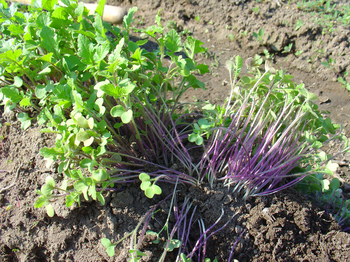
Mustard microgreens, about to be turned into green manure
This January in an experiment in producing biomass, maintaining good soil condition and weed mitigatation in my lower garden, I planted green manure cover crops. Of course nothing sprouted because in January the ground is far too cold and you’d have to be a crazy woman who has just read fifteen articles about the benefits of green manures to do such a thing. But in March I re-sowed the same crops again and this time the seeds sprouted to the acronym AMBRASSS, rhymes with je t’embrace, alfalfa, mustard, buckwheat, red night kidney, adzuki, soy, soy, soy).
This lower garder is going to be my workaday garden for plants that take up space, need verticality and like to roam. Yesterday I turned the alfalfa, mustard and buckwheat rows under as green manure for the summer’s seed beds. I am thrilled to bits with the results of the covercrop/green manure experiment. The plants yielded very long roots and massive hairy rootballs, all of which are going to rot forthwith and produce a healthy subterranean microbial culture upon which the summer gourds and melons will thrive. Whilst turning the soil I came across zillions of earthworms, dark and fat. Am I insane for not really liking the rototiller, turquoise though she is?
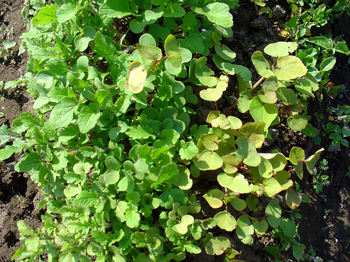
Mustard and buckwheat, sadly no image of the alfalfa
The goal of the first phase of this experiment (produce biomass to introduce organic material into the soil) is an absolute success. The goal of the second phase of this experiment is to see how the green manure performs. Performs in comparison to what, is the question.
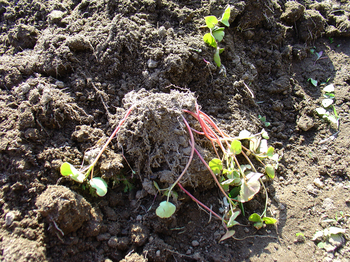
A clump of buckwheat showing how much rootmass it has produced, pretty red-stemmed and bronze coloured foliage
Reality check: It probably goes without saying that I have not exactly applied the scientific method to this ‘experiment’ and should probably call it the ‘Hmm, wonder if this works’ method. Unfortunately I’m emotionally attached to the green manures and cover crops concept and have already decided to get good at doing things this way, but I’ve observed (unfortch) that the array of native ‘weeds’ in combination seem to produce as much biomass as the alfalfa, mustard and buckwheat mix, although I don’t know what they do to the soil condition. Considering that the soil condition already looked good before starting, I have no reason to believe that the weeds deplete the nutrients, but of course I’ll never know because I didn’t leave a control section.
And obviously, because I can even write about the native weeds shows that the covercrops weren’t really that good at mitigating weeds - although there were LESS weeds in the rows than on the banks of the rows. I’m more of an eyeballer than a counter.
Come autumn, the proper season for planting the green manures, I’ll try planting over the entire allottment to see if this helps with weed mitigation. In fact, I’ve pretty much decided that throughout the summer I’m just going to go around throwing alfalfa, mustard and buckwheat seeds at everything.
Whatevs. I’m married to the idea that these plants will be my new weeds and I even had a dream last night that after years of planting the cover crops, I had increased the biomass on my allottments so much that my gardens were one metre higher than everyone elses.
debra at 11:05 | | post to del.icio.us

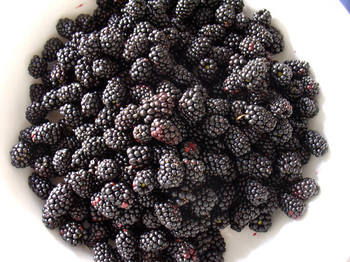
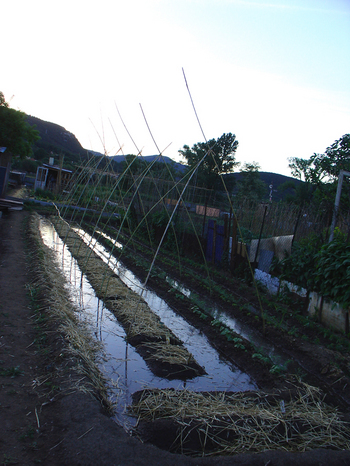
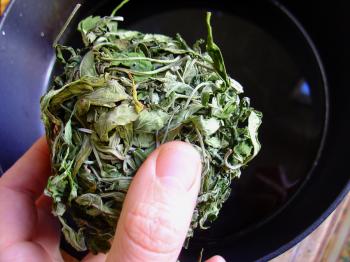
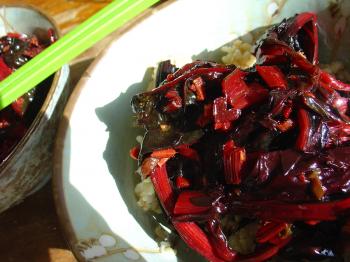
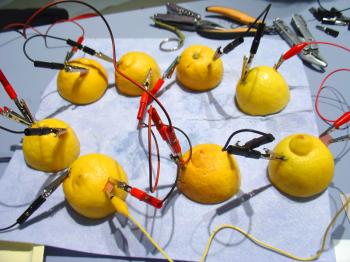











I’m not sure I fully understand the concept of planting non-leguminous cover crops. Aren’t they taking more nitrogen out then their decay puts back in?
I planted favas as green manure last fall, but I didn’t turn over most of them because I wanted to eat the favas.
Comment by max — May 4, 2006 @ 22:00
Max, I understood from this article (and others) that mustard was OK in terms of nitrogen enhancing:
“Wild mustard has proven effective as a cover crop for weed suppression in apple orchards converting from conventional to organic management. Mustard’s ability to grow fast and smother other plant growth is achieved by its allelopathic inhibition of other weeds. Glucosinolates, a chemical found in most species of the genus Brassica (including mustard) inhibit weed seed germination. Moreover, apple production and tree growth rate were improved in mustard cover plots relative to the conventional plots. Nitrogen stored in mustard biomass was returned to the soil when the cover crop was cut down in the spring, enhancing nutrient cycling. Mustard cover crops also attract beneficial insects during their flowering period.”
But the main reason was that I just wanted to try a few plants. Normally mustard is used in orchards to keep out weeds, not in tiny little garden plots. Here we have such sandy soil that I was attracted to anything that would grow quickly and digest since I only had 6 weeks to go from start to finish. Ideally you plant a green manures in the fall.
I’ve already decided to eat my soybeans (edamame) and the other beans. Still I’ll have the plants and husks to put back into the soil. I started them WAY TOO EARLY to have a hardy crop. I think my little rows look quite measly compared to the bean crops of my steroid feeding neighbours. Their beans are BIG AND MUSCLY, mine are wimpy and organic.
Comment by Debra — May 7, 2006 @ 11:30